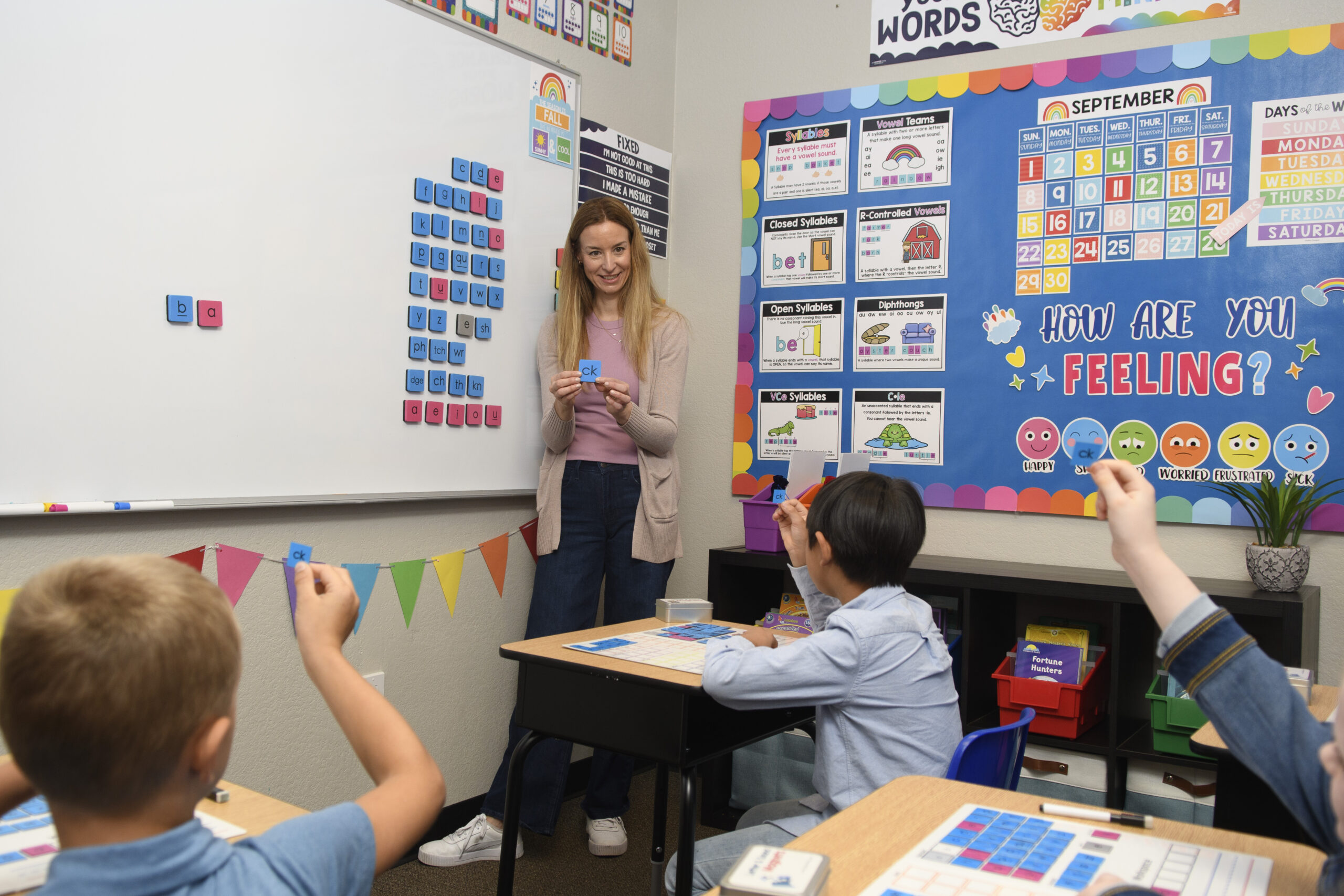It’s no secret that spelling is often the unsung hero of literacy instruction. It doesn’t carry the excitement of reading a new book aloud or the immediate creativity of writing a personal story, but spelling is crucial to the bigger picture. It helps build reading fluency, writing accuracy, and even confidence in learners. So, how can educators effectively integrate spelling into the flow of daily literacy activities without making it feel like a separate (or dreaded) task?
At PDX Reading Specialist, we believe that when spelling is woven seamlessly into literacy instruction, and aligned with the Science of Reading, it becomes both powerful and purposeful. In this post, we’ll unpack how you can bring spelling to life every day in your classroom or learning space.
Why Spelling Deserves a Spotlight
Spelling isn’t just about memorizing word lists or passing a Friday test. It’s a window into a student’s understanding of language. When students spell, they reveal what they know about:
- Phoneme-grapheme correspondence (linking sounds to letters)
- Phonemic awareness (manipulating individual sounds in words)
- Morphology (understanding roots, prefixes, and suffixes)
- Orthographic mapping (the process of remembering how words look and sound)
Spelling draws on all the foundational components of reading and writing, which makes it the perfect candidate for integration, not isolation, in literacy instruction.

The Science of Reading Connection
The Science of Reading isn’t a curriculum; it’s an evidence-based body of research that outlines how the brain learns to read. It emphasizes explicit, systematic instruction in the five pillars of literacy: phonemic awareness, phonics, fluency, vocabulary, and comprehension.
Spelling fits right into this framework. In fact, it acts as a reinforcement mechanism for phonics and phonemic awareness while also strengthening vocabulary and word recognition. When aligned with this approach, spelling instruction becomes not just an add-on but a key component of literacy development.
5 Easy Ways to Integrate Spelling Into Daily Literacy
Let’s break down five practical ways to weave spelling into your everyday literacy routine, no separate workbook required.
1. Morning Message or Bell Work
Start the day with a quick message on the board that includes intentional spelling patterns or words with target phonemes. Ask students to spot errors, suggest corrections, or explain why a word is spelled a certain way. This simple activity warms up their spelling brain while fostering grammatical awareness.
2. Shared Reading and Word Hunts
While reading a shared text, pause to spotlight specific spelling patterns. For example, if you’re focusing on vowel teams, challenge students to hunt for them during a read-aloud. Have them write or draw attention to those words in their reading journals.
This reinforces decoding and encoding simultaneously.
3. Writing Workshop Connections
During writing time, encourage students to use spelling knowledge actively. If a student asks how to spell a word, guide them with questions like, “What sounds do you hear?” or “Do you know any parts of this word already?” This encourages students to apply their phonics and morphology skills.
Keep a word wall or a personal spelling journal handy so students can reference patterns they’ve learned.
4. Small Group Instruction with Word Work
In guided reading or intervention groups, incorporate spelling-focused mini-lessons. Use decodable texts to highlight spelling rules and ask students to manipulate word parts using magnetic letters or spelling tiles.
This is especially effective when focusing on multisyllabic words and morphology (like -ing, -ed, prefixes, and suffixes).
5. Dictation and Sentence Practice
Once or twice a week, use dictation to practice spelling in context. Say a sentence aloud that includes target spelling words. Students write it down, check their work, and discuss their choices.
This strategy ties together listening, writing, grammar, and spelling all in one activity.

Making It Stick with Orthographic Mapping
Orthographic mapping is how our brains permanently store written words. It’s the mental process that connects a word’s pronunciation, spelling, and meaning. When students understand how a word is built (sound by sound, morpheme by morpheme), they’re more likely to remember and apply it.
To support orthographic mapping:
- Use word chains to show how changing one letter changes the word (e.g., cat → bat → bit → big)
- Teach spelling rules explicitly (like “i before e” or the doubling rule)
- Incorporate multisensory activities, students say the word, tap it out, write it, and read it again
Tools That Support You, And Your Students
Let’s face it: planning all of this takes time, and not every resource on the market aligns with research-based best practices. That’s where PDX Reading Specialist comes in.
We offer tools and materials that are:
- Rooted in the Science of Reading
- Designed by literacy professionals
- Practical for classroom and intervention use
- Adaptable to a variety of student needs
Whether you’re looking for decodable readers, spelling intervention kits, or phonics-based games, our solutions take the guesswork out of planning and give you confidence that your instruction is research-aligned.
Final Thoughts: Spelling as a Bridge, Not a Barrier
When spelling is integrated into daily literacy, not segmented or sidelined, it becomes a powerful connector between reading, writing, and language development. The best part? It doesn’t require a total overhaul of your routine, just a few intentional tweaks and a toolkit of effective resources.
You don’t need more hours in the day to teach spelling well. You just need the right approach, and the right support.
Ready to Make Spelling Fun?
Explore spelling and literacy tools that align with the Science of Reading.
Shop PDX Reading Specialist today and empower every student to become a confident reader and writer.


